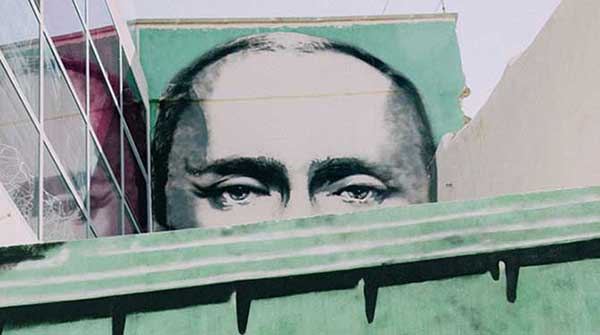 One of the unintended consequences of Great Britain’s Brexit vote is that the European Community (EU) has put any future membership expansion on hold.
One of the unintended consequences of Great Britain’s Brexit vote is that the European Community (EU) has put any future membership expansion on hold.
Kiev had signed the Ukraine-European Union Association Agreement on June 27, 2014, in expectation it would lead to full membership in the EU. Now, any hope of becoming a full-fledged member of the EU has receded into the indefinite future.
Of late, Moscow has been reminding Kiev of its strategic vulnerability by ratcheting up tension with Ukraine. Russian President Vladimir Putin recently accused Ukraine of staging two “incursions” into Crimea to infiltrate “trained saboteurs” in order to target “critical infrastructure” over the weekend of Aug. 5.
The Ukrainian government labelled the Russian claim “a fantasy,” and accused Putin of deliberately escalating tensions in the two-year-old conflict between the two countries.
In the meantime, the Kremlin announced that the Russian Navy would stage “war games” in the Black Sea, the deployment of the advanced S-400 Triumph air-defence missile system in the Crimea, and additional military exercises along its eastern border with Ukraine.
According to Pentagon sources, Russia has deployed approximately 40,000 troops in eight separate staging areas along Ukraine’s eastern border. An unspecified number of troops in adjoining rear areas are also slated to participate.
Is Russia considering a second invasion of the Ukraine? Not for the moment.
To begin with, the Russian military simply lacks the manpower to invade and occupy Ukraine. Such an invasion would also kill any prospects of lifting the economic sanctions against Russia imposed by the EU and the United States. It would also breathe new life and resolve into NATO at a time when the organization is uncertain about its ongoing role and mission.
A limited invasion would be more attainable militarily but would still precipitate the same consequences as a full-fledged invasion.
What is more likely is that the sabre-rattling is part of a broader Russian strategy of keeping the Ukraine unbalanced by alternating between the possibility of peace and the prospect of renewed fighting, while at the same time giving the EU and NATO a not so subtle warning that cozying up to Kiev will draw them into the middle of a hot war zone.
Putin’s hold on the Kremlin may also be an issue. In recent weeks, Putin has made significant changes to his inner circle, in what some intelligence analysts have described as a purge. Sabre-rattling in the Ukraine allows Putin to project an image of being in control, even if it’s ultimately a bluff.
Among the Russian elite, privately, Putin is blamed for seriously mishandling the situation in the Ukraine. Between 2012 and 2016, Kiev went from a pro-Russian government to a pro-Western government.
While the U.S. and its allies encouraged and partially funded the Euromaidan protests that precipitated the 2014 revolution, those protests only started because the Kremlin and the pro-Russian government of Viktor Yanukovych overreached in seeking closer ties with the Russian Federation.
Beyond keeping tension in the region high, Russia has not managed to accomplish much in the Ukraine since its 2014 invasion. The Ukrainian army has effectively contained the separatists from further expansion. Only with significant ground support from the Russian military can the separatists hope to expand their enclaves.
In the meantime, the imposition of economic sanctions against Russia came at a time when the Russian economy was already reeling from the collapse of crude oil prices. The sanctions have lasted longer than the Kremlin imagined they would. Their impact on the Russian economy and standard of living has been profound.
Ultimately, the Russian strategy toward the Ukraine will be shaped by two, at times conflicting, objectives: the need to eliminate the economic sanctions against Russia and the need to ensure that the government in Kiev is either pro-Russian or neutral.
A military intervention may solve the governmental issue at the expense of aggravating the economic one. For that reason, a military solution is the least desirable option and would only be used if Moscow saw Kiev slipping irreversibly from its grasp, i.e., joining NATO or a full membership in the EU.
Alternatively, if a political or diplomatic solution can’t be found, Russia’s elite might opt to offer its own version of a “reset button,” ousting Putin and blaming him for the Ukrainian debacle and offering to “normalize” relations with Ukraine, Europe and the United States.
It’s unlikely that the Kremlin would ever give up its control of the Crimea. Some compromise over the status of the Russian separatists in the Donbas basin and a full implementation of the Minsk Peace Accords in return for keeping Ukraine out of both NATO and a full membership in the EU, might, however, end the economic sanctions.
In the end, it will be all about who blinks first. So far, Putin has refused to blink. Europe and the United States have followed suit. Whether Russia’s elite will prove to be as steadfast is the question now.
Joseph Micallef is a historian, best-selling author and, at times, sardonic commentator on world politics.
Joseph is a Troy Media contributor. Why aren’t you?
The views, opinions and positions expressed by columnists and contributors are the author’s alone. They do not inherently or expressly reflect the views, opinions and/or positions of our publication.


